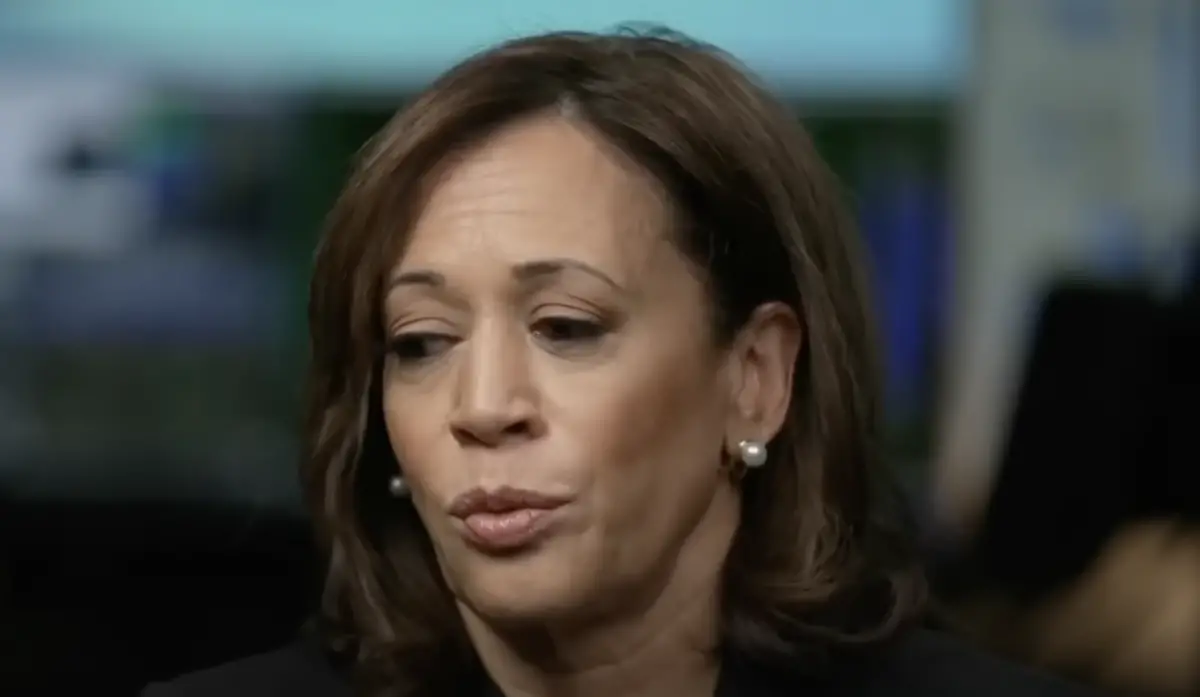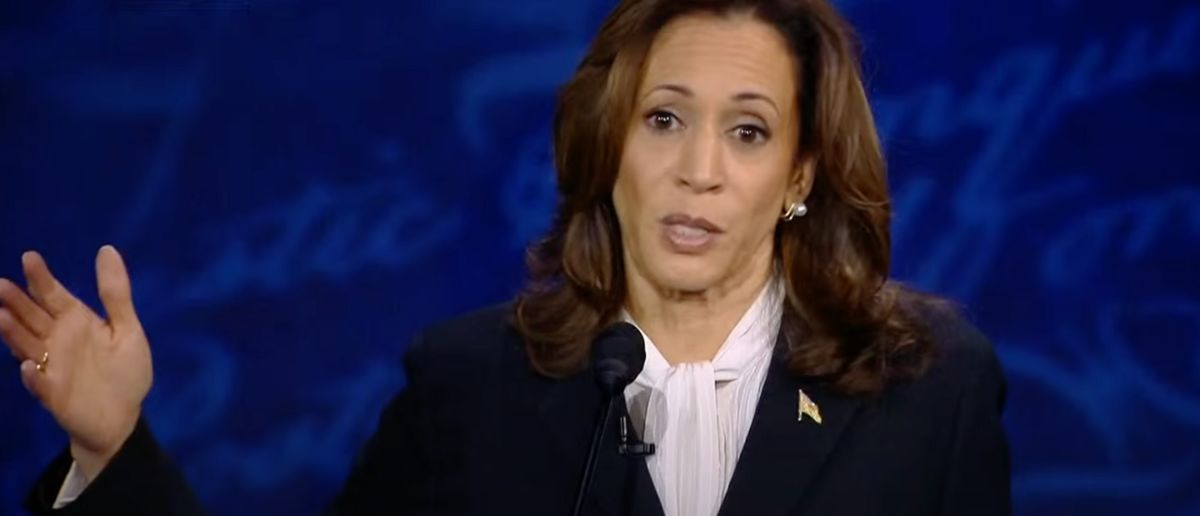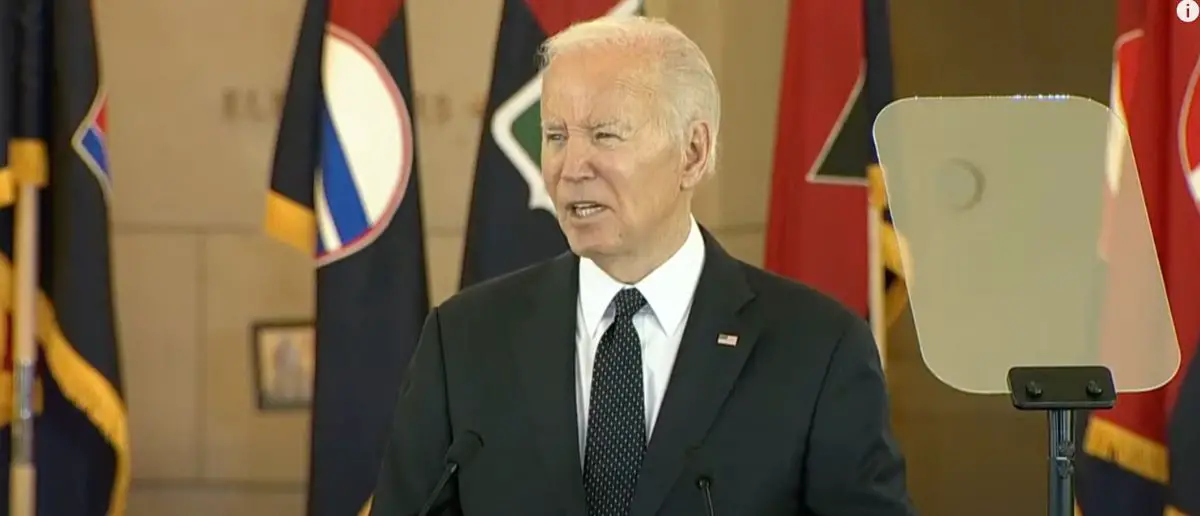
Former Vice President Kamala Harris has lost her mind. She’s not taking to her 2024 loss well.
Because Kamala Harris has just posted an extremely disturbing video online.
Recently, former Vice President Kamala Harris shared a TikTok video to counter claims that she has been idly relaxing since her November presidential election loss, emphasizing her ongoing work. The video appears to engage with the “Who Said That” TikTok trend, where participants hide their mouths while speaking bold statements. However, Harris visibly moved her lips without covering them, using the moment to highlight her forthcoming book and her active efforts.
“Everyone thinks you’ve been kicking back, drinking margaritas on the beach, but really you’ve been hard at work writing a book, meeting with leaders, thinking about the future of our country,” Harris said, facing away from the camera. “Who said that?” she playfully asked, turning back to face the camera.
In a Wednesday statement, Harris clarified she would not run for California governor, dismissing speculation about her entering the race or eyeing a 2028 presidential bid. She expressed enthusiasm for supporting Democratic candidates nationwide and promised to share more about her plans soon.
Harris’s 2024 presidential campaign began abruptly after President Joe Biden withdrew and endorsed her on July 21, 2024. She ultimately lost the popular vote and all seven swing states to President Donald Trump. On Thursday, Harris announced she authored a book titled “107 Days” about her campaign, slated for release in September.
Comedian Kareem Rahma, during a March appearance on the “Forbes Top Creators Show,” recalled an odd, unreleased interview with Harris for his “Subway Takes” program during her campaign.
“Her take was really confusing and weird and not good. And so we mutually agreed that we shouldn’t publish it,” Rahma said. “And I got lucky because I didn’t want to be blamed for her losing.”
Why Kamala Harris Struggled to Connect with Voters in Key Regions
Kamala Harris’s 2024 presidential campaign faced significant challenges in resonating with average voters, particularly in swing states like Pennsylvania, Michigan, and Wisconsin, which overwhelmingly supported Donald Trump. Several factors contributed to her disconnect, rooted in campaign strategy, public perception, and regional priorities.
Harris’s campaign, launched just 107 days before the election, suffered from a compressed timeline. After Biden’s abrupt exit, she scrambled to define her platform, often pivoting between progressive policies from her 2020 primary run and more moderate stances to appeal to a overall electorate. This shift confused voters, who struggled to pinpoint her core message. In key regions, where economic concerns like inflation and job security dominated, her emphasis on issues like so-called “reproductive rights” and climate policy often felt misaligned with local priorities.
Public perception of Harris also posed a hurdle. Her tenure as vice president was marked by criticism over her handling of high-profile assignments, such as border security, which Republicans effectively weaponized. In swing states with diverse working-class populations, voters viewed her as part of an out-of-touch Washington elite. Her prosecutorial background, while an asset in debates, clashed with the populist, relatable tone Trump mastered, particularly in rural and suburban areas.
Harris’s campaign struggled with outreach in critical regions. In Michigan, for instance, her limited engagement with Arab-American communities, frustrated by U.S. foreign policy on Gaza, led to a notable shift toward Trump or third-party candidates. Similarly, in Pennsylvania, her appearances in urban centers like Philadelphia did little to sway rural voters who felt neglected by Democrats. Trump’s campaign, by contrast, invested heavily in small-town rallies, amplifying his “America First” message.
Her communication style also drew scrutiny. The unreleased “Subway Takes” interview, described by Kareem Rahma as “confusing and weird,” continues her trend of being awkward and frankly unlikeable. Unlike Trump’s off-the-cuff charisma, Harris’s polished delivery often felt inaccessible to voters craving unfiltered relatability. Her TikTok video, meant to humanize her, instead highlighted a disconnect, as its execution misfired with the trend’s informal vibe.
Economic messaging further undermined Harris’s appeal. In Wisconsin, where manufacturing and agriculture are vital, voters prioritized tangible solutions to rising costs. Harris’s proposals, such as tax credits for families, were overshadowed by Trump’s promises of tariffs and deregulation, which resonated with blue-collar workers. Web sources note that Harris’s campaign ads rarely addressed pocketbook issues directly, ceding ground to Trump’s economic populism.
Regional cultural dynamics also played a role. In swing states, where distrust of federal institutions runs high, Harris’s association with the Biden administration’s perceived missteps—like inflation spikes and border challenges—alienated independents. Trump capitalized on this frustration, framing himself as an outsider despite his prior term. Harris’s failure to distance herself from Biden’s record left her vulnerable in areas where change was a voter priority.
Finally, Harris’s campaign lacked the grassroots momentum Trump cultivated. Online analyses highlight Trump’s robust ground game, with door-knocking and local events dwarfing Democratic efforts in key counties. Harris relied heavily on digital outreach and celebrity endorsements, which failed to translate into turnout in regions where personal engagement matters. Her post-election efforts, like the TikTok video and book announcement, suggest an attempt to reframe her image, but they don’t seem to be landing well so far.
Stay tuned to the DC Daily Journal.





